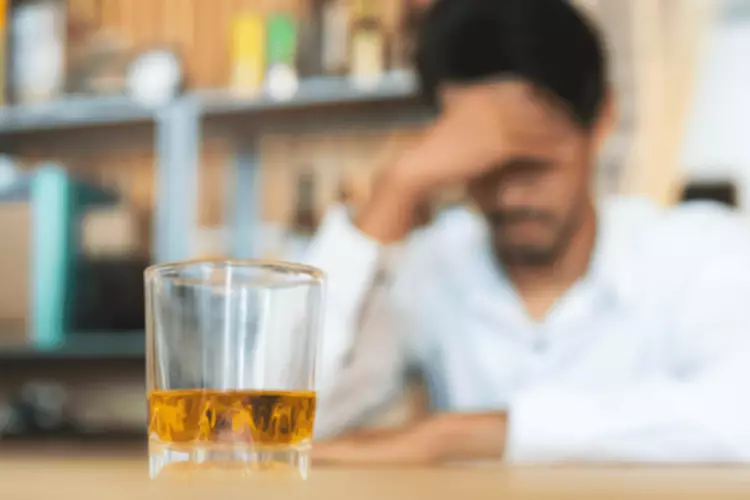Alcohol Interventions for Young Adults National Institute on Alcohol Abuse and Alcoholism NIAAA

If you are concerned that your teen may have a problem with drugs or alcohol, help is available, and many addiction therapy options exist to fit the unique needs of your teen and family. Though teen alcoholism can happen in any family, some teens are more at risk for becoming alcoholics than others. Some of the risk factors for teen alcoholism include depression and anxiety. Teens who are prone to emotional problems are more likely to abuse alcohol than other teens. Teens who exhibit thrill-seeking behaviors or are unable to control their impulses are also more likely to abuse alcohol.
Alcohol Abuse & Treatment Information On Other Groups

Furthermore, while boys and girlsare both at risk for sexual abuse in interpersonal relationships aschildren, boys move out of risk in adolescence but girls continue tobe at risk for sexual abuse (Covington and Surrey, 1997). Future research and treatment should also account for changes in policy and state laws, specifically around the legalization of cannabis. Research suggests that the legalization of cannabis may be linked to an increase in use among adolescents as a result of increased accessibility and social acceptance [98].
- You may be able to better compare your options by assessing whether and how the program or provider measures success.
- Here’s some information to help you get ready for your appointment, and what to expect from your health care provider or mental health provider.
- Treatment involves getting the person to the hospital immediately so medical professionals can watch the person closely, give the person oxygen and fluids, and take other measures in order to prevent choking, as well as stopped breathing or heartbeat.
- Table 1 provides a summary of the current treatment recommendations and options for adolescent substance use disorders.
- Rather, get help from an organization that specializes in teens with alcohol dependency problems.
When Is It Time for Treatment?

Another symptom of alcoholism is denial—if you see clear signs that there is a problem, you may not be able to accept your teen’s reassurance that everything is fine. It is better to get help young than to have to confront a substance abuse problem later on life, when the legal and physical consequences may be more severe. Intoxicating substances like alcohol have a much greater impact on developing brains compared to adult brains. While high-volume substance abuse can damage adult brains over time, the brains of adolescents are at much greater risk for stunted growth, developmental abnormalities, and mental illness from drinking less alcohol because these structures are still forming.
Reducing Underage Drinking: A Collective Responsibility.
Additionally, teens commonly experience high emotions, intense peer pressure, and the temptation of short-term rewards. These situations may overwhelm the still-developing area of the brain involved in reasoning and impulse control, leading to risky behaviors. Some teen treatment programs offer different forms of experiential therapy, a form of therapy that focuses on healing through action-oriented experiences.
Outpatient Alcohol Treatment Centers for Teenagers
Overall, gather as much information as you can about a program or provider before making a decision on treatment. If you know someone who has firsthand knowledge of a program, it may help to ask about their personal experience. Certain medications have been shown to effectively help people stop or reduce their drinking and avoid a return to drinking. Ultimately, choosing to get treatment may be more important than the approach used as long as the approach avoids heavy confrontation and incorporates empathy, motivational support, and a focus on changing drinking behavior.
Mutual-Help and Support for Teens and Young Adults
Evidence-based psychosocial and pharmacotherapy approaches are used concurrently to treat psychiatric disorders when present. There also may be a role for adjunctive addiction pharmacotherapy for treating adolescents with SUDs who do not respond to behavioral intervention. The National Institute on Alcohol Abuse and Alcoholism (NIAAA) reports that an estimated 16 million people in the United States have alcohol use disorder (AUD) – an addiction to alcohol, specifically. While 15.1 million of these individuals are adults, there are about 623,000 adolescents between the ages of 12 and 17 who have a diagnosable AUD. Many of these young people abuse alcohol due to social pressure or stress at school or home, and this abuse can lead to ongoing struggles with alcohol and other drugs later in life.

Alcohol Rehab Centers for Teens and Young Adults
It may involve addressing co-occurring family problems or conflicts that may contribute to teen substance use. More specific family-involved therapies may include multidimensional family therapy, brief strategic family therapy, and functional family therapy. The overall goal of family therapy is to help build stronger family relationships and mutual understanding to help support the teen’s long-term recovery.
- If your provider suspects that you have a problem with alcohol, you may be referred to a mental health provider.
- In addition, teens need to build different skills and coping strategies than adults.
- Counseling for adolescents may use different techniques and often places much greater emphasis on family therapy.
- If your teen is abusing alcohol, it is unlikely that he or she will volunteer it.
- Teens who exhibit thrill-seeking behaviors or are unable to control their impulses are also more likely to abuse alcohol.
- Ideally, health care providers will one day be able to identify which AUD treatment is most effective for each person.
Adolescent Substance Use Disorder Treatment: An Update on Evidence-Based Strategies
Others consume alcohol illegally out of a sense of curiosity, or to defy their parents’ warnings against doing so and risking disciplinary or even legal action. This type of occasional use among teenagers can be dismissed as “growing pains,” so long as no dangerous behavior, such as operating a motor vehicle while intoxicated, accompanies their use of alcohol. New preliminary data from CSAT’s Adolescent Treatment Model study(Perry et al.,2003) indicates the importance of the therapeuticrelationship in retaining youth in treatment. The therapeuticrelationship builds a climate of trust between a therapist and aclient that facilitates behavior change. Qualities in therapiststhat foster this relationship include flexible, intelligentthinking, good interpersonal skills, and genuine empathy.
- Simply understanding the different options can be an important first step.
- Social host provision laws are enacted by local or state governments to hold accountable adults who supply alcohol to those under age 21.
- For more information, please visit the NIAAA Alcohol Treatment Navigator®, an online tool that helps individuals find the right treatment for them—and near them.
- Psychosocial or behavioral intervention is the primary treatment modality for youths with substance use problems.
- SAMHSA’s mission is to lead public health and service delivery efforts that promote mental health, prevent substance misuse, and provide treatments and supports to foster recovery while ensuring equitable access and better outcomes.
Brain Damage from Adolescent Alcohol Abuse
In addition to issues involving addiction and withdrawal, these young people may need help with education, co-occurring mental health conditions, family life, and more. Your health care provider or mental health provider will ask additional questions based on your responses, symptoms and needs. Preparing and anticipating questions will help you make the most of your appointment time. Residential treatment programs typically include licensed alcohol and drug counselors, social workers, nurses, doctors, teenage alcoholism and others with expertise and experience in treating alcohol use disorder. Continuing care is crucial to achieving long-term outcomes.Continuing care is often one of the weakest features of adolescenttreatment programs nationwide (Drug Strategies, 2003). Programsshould institute a process of continuing care that includes relapseprevention, training, follow-up plans, referrals to communityresources, and periodic check-ups after completing treatment inorder to help teens avoid recidivism.
- We’ll be able to tell you if your insurance provider is in network with an American Addiction Centers treatment facility.
- Seeking professional help can prevent a return to drinking—behavioral therapies can help people develop skills to avoid and overcome triggers, such as stress, that might lead to drinking.
- Alcohol abuse and dependence, like most medical or psychologicaldisorders, tend to be chronic.
- When addressing drinking problems, it’s important to also seek treatment for any accompanying medical and mental health issues.
- However, given the accessibility (schools, primary care, acute care) and brief nature (10–20 minutes) of MI and MET, these interventions may become a key component in a comprehensive approach to treating adolescent SUDs.
How to Recognize Alcoholism in Teenagers and Provide Support
Depending on the severity of your teen’s substance use disorder (SUD) and other personal needs, there are several options for treatment, including inpatient and outpatient programs. These programs will utilize therapy techniques that are tailored to the unique, age-specific needs of adolescents, like self-esteem development, to help your teen recover from a SUD. The first stage involves access to alcohol rather than the use of alcohol, tobacco, inhalants, or other drugs. In that stage, minimizing the risk factors that make a teenager more vulnerable to using alcohol is an issue. The second stage of alcohol and other drug use ranges from experimentation or occasional use to regular weekly use of alcohol, tobacco, inhalants, or other drugs. The third stage involves a youth further increasing the frequency of alcohol use and/or using alcohol and other drugs on a regular basis.
